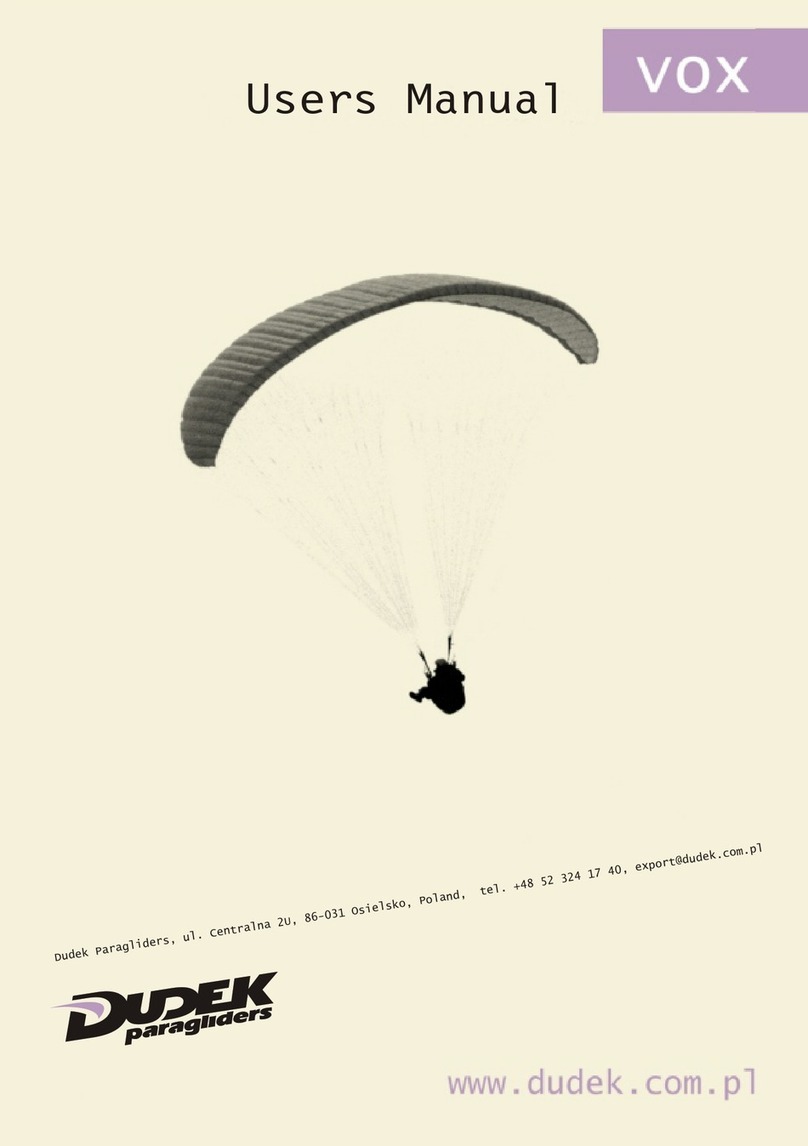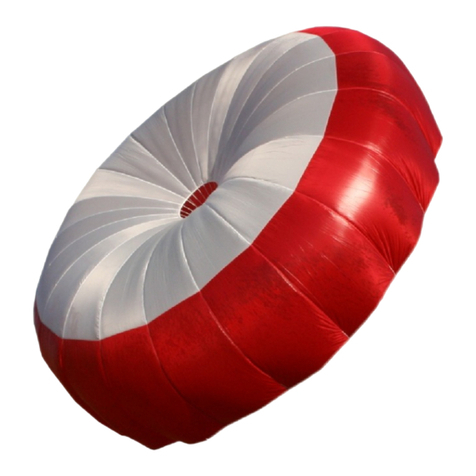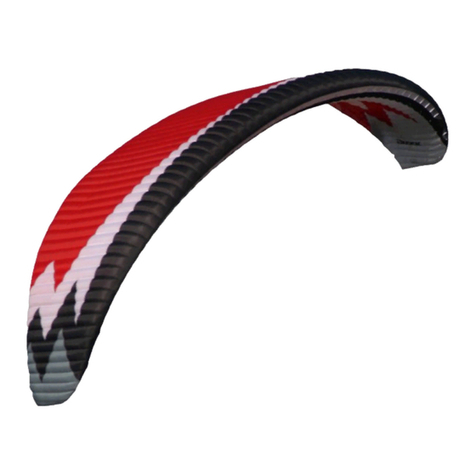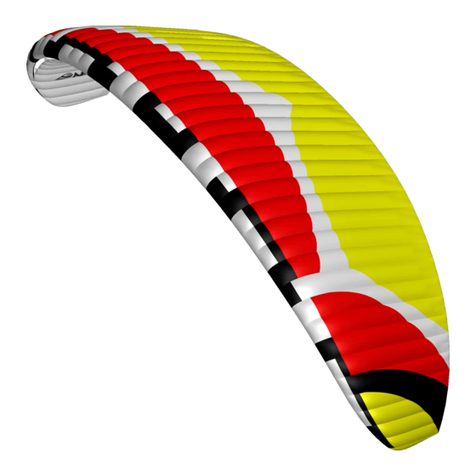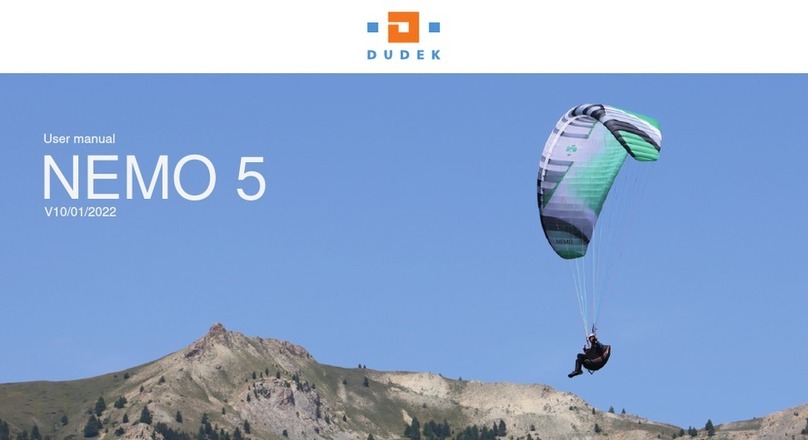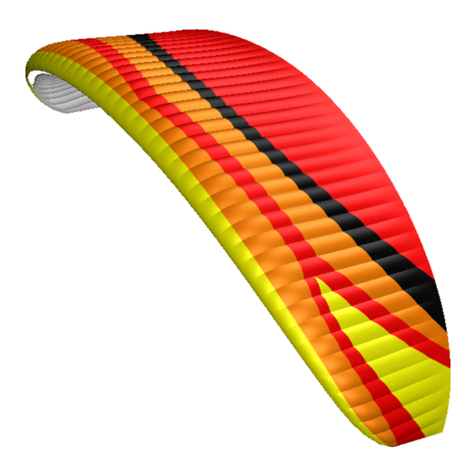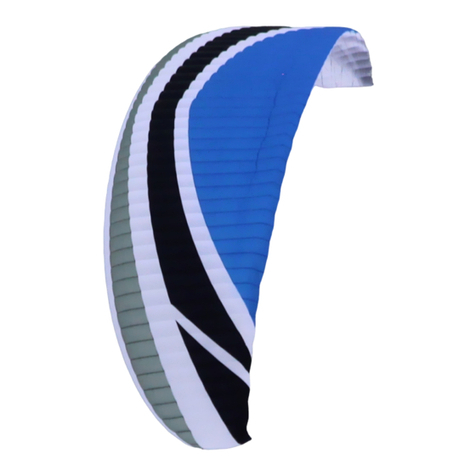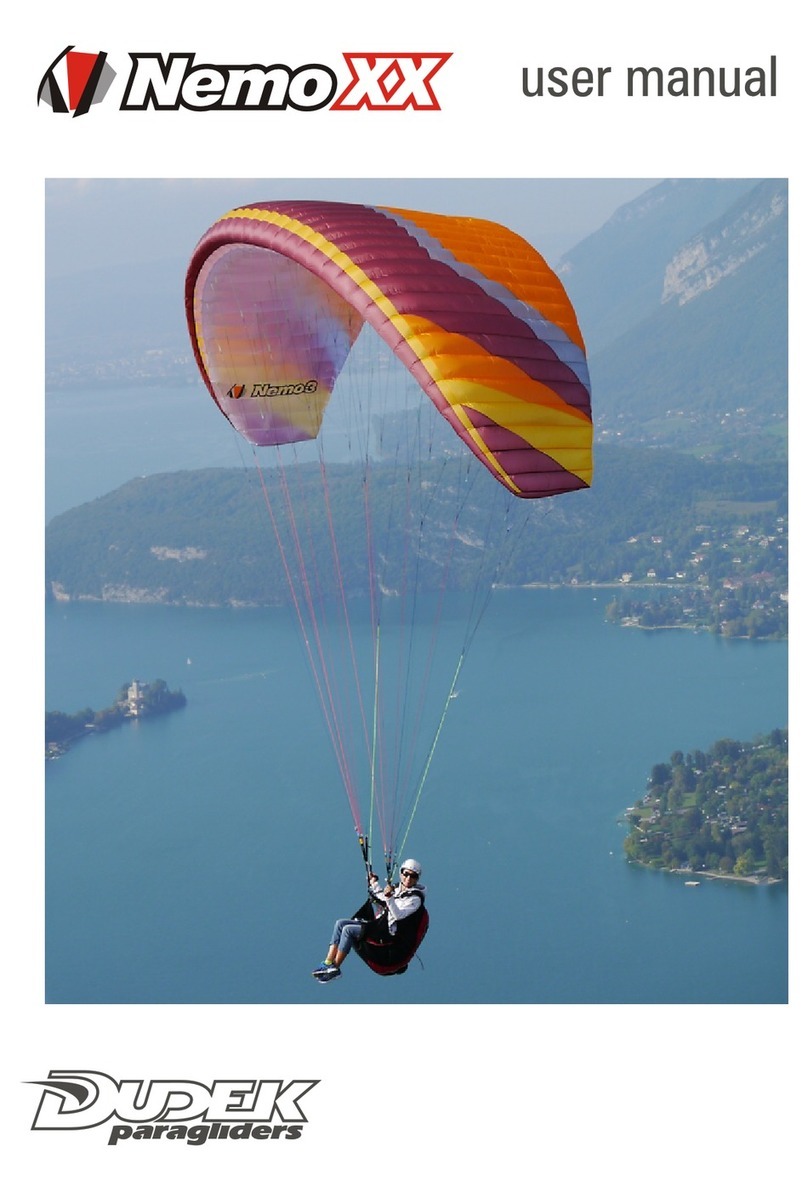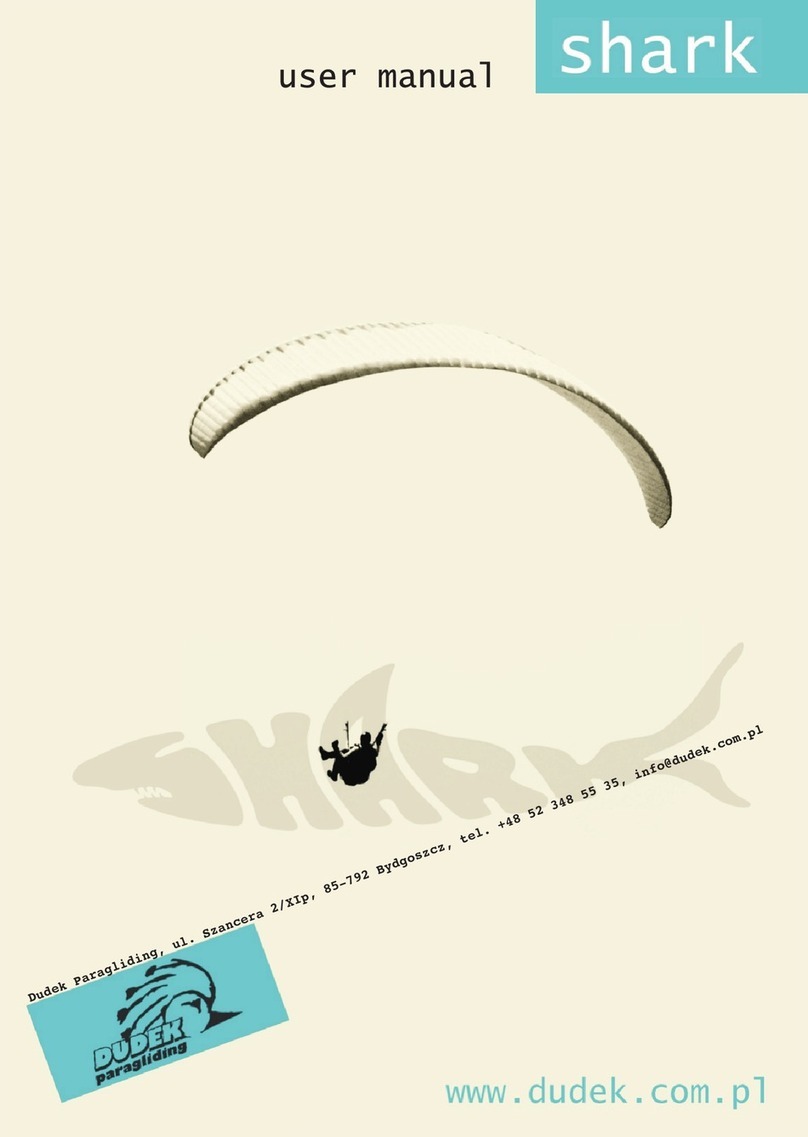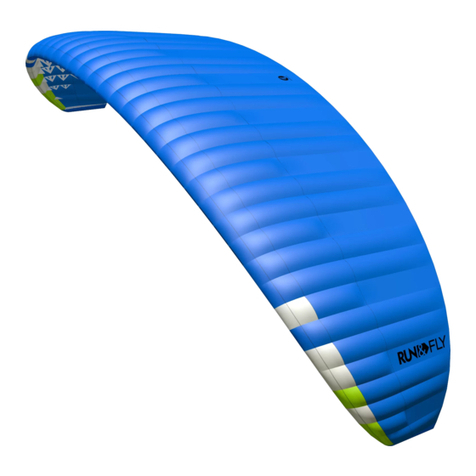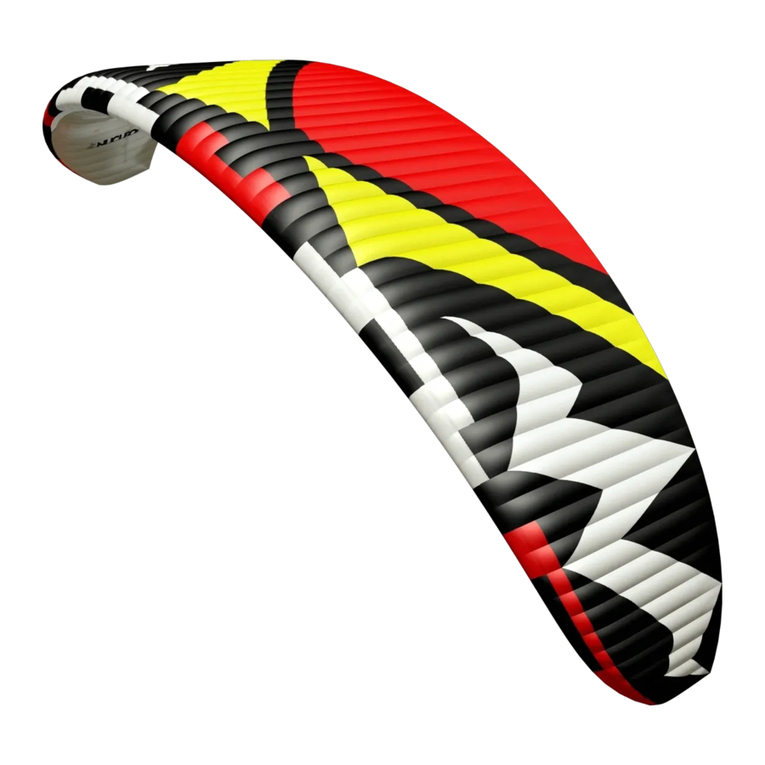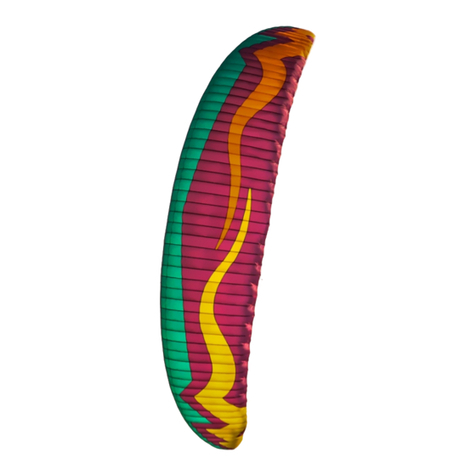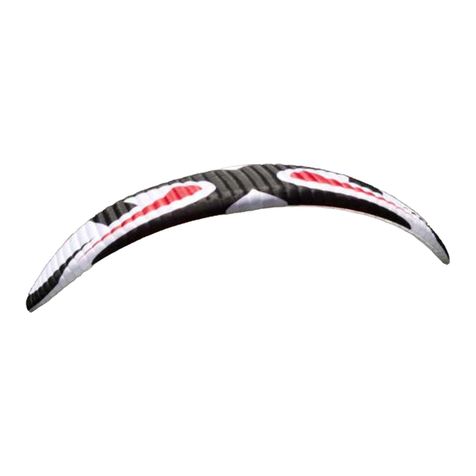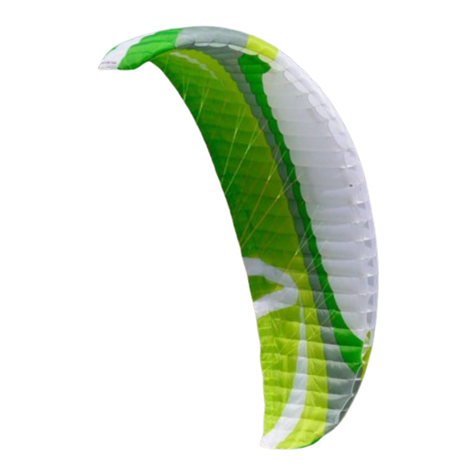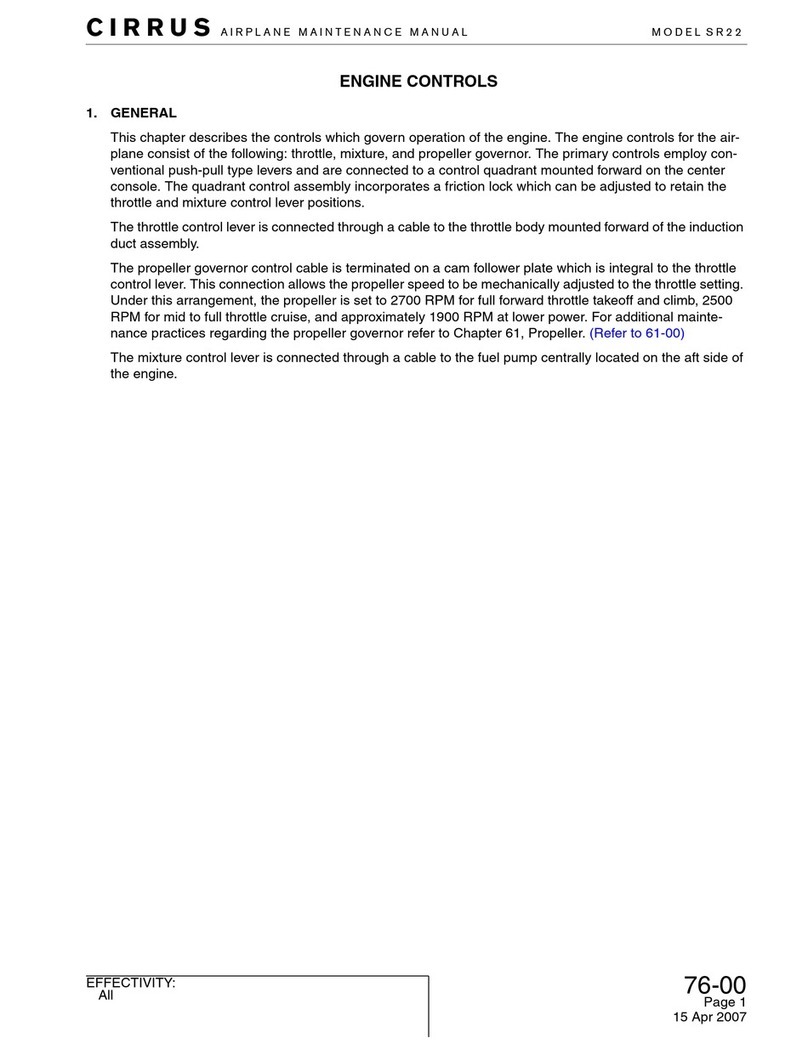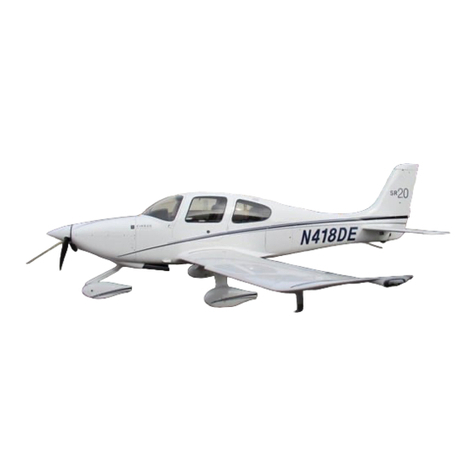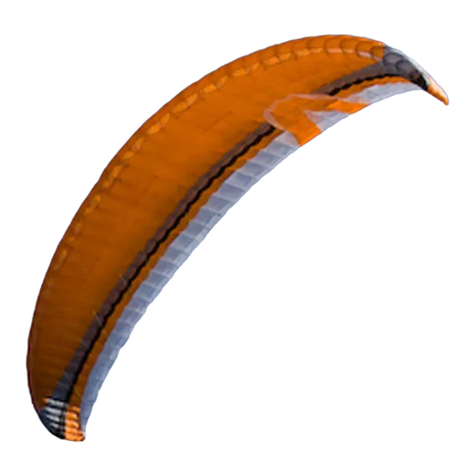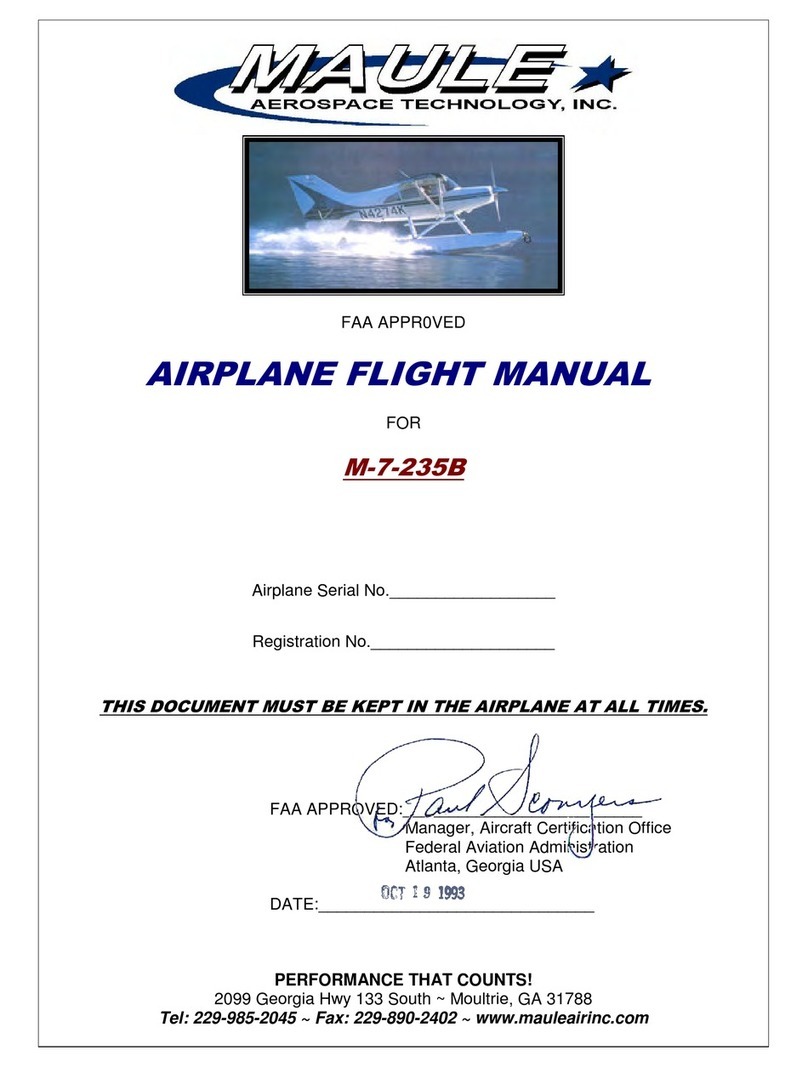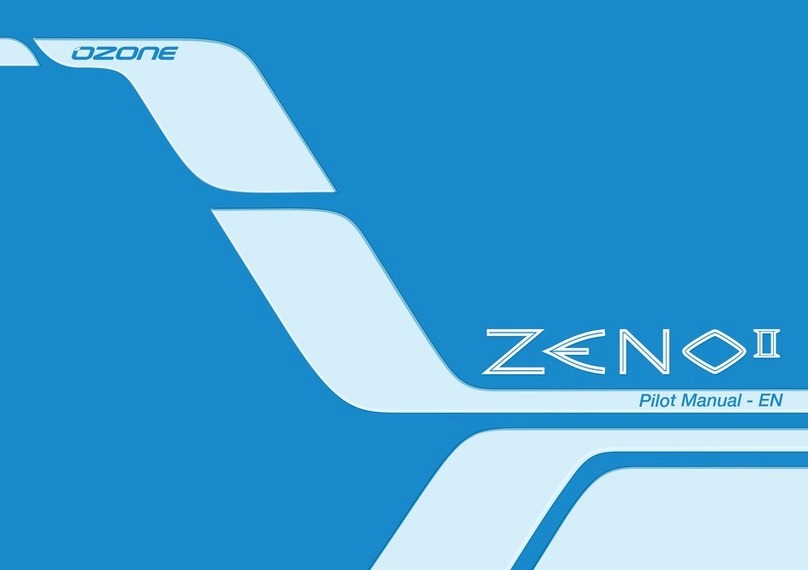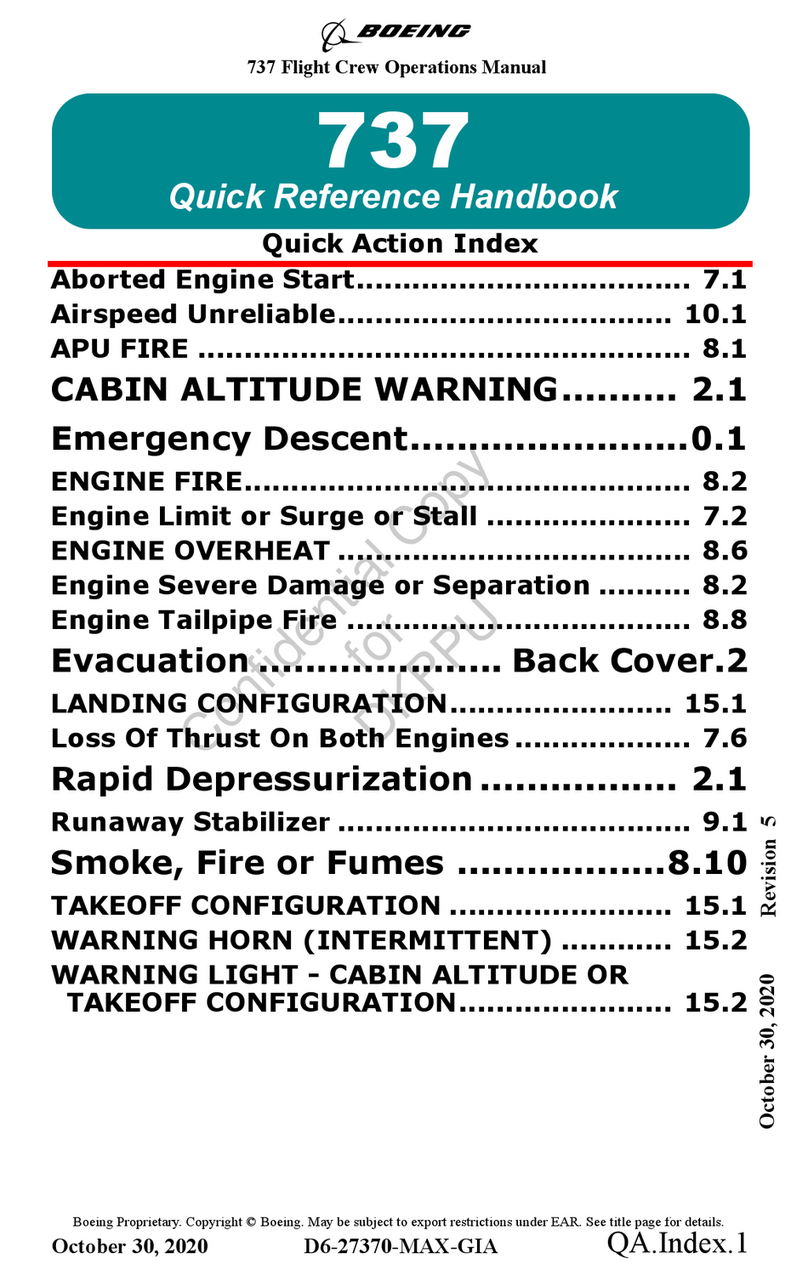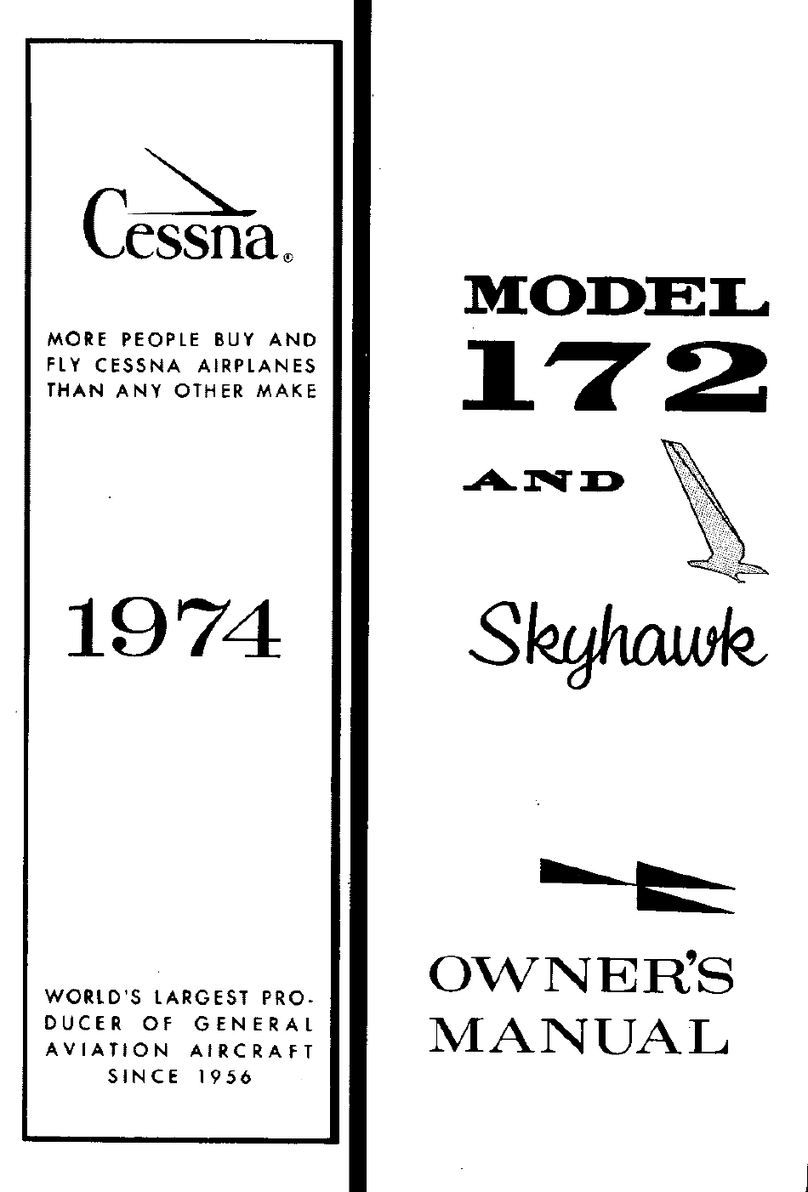real flying tests. Such covered fabric is not very stiff and - what's most
important - has increased tear, stretch and UV resistance. It is not siliconed,
so minor repairs can be easily made with self-adhesive strips.
The lower surface is made of Skytex 40 Classic with E38A impregnate. This
fabric has a great weight/resistance ratio and is one of the greatest Porcher
successes in providing proper materials for the paragliding industry.
The ribs must be as rigid and stretch-resistant as possible. We found these
qualities in Skytex 40 Hard with E29A impregnate. All reinforcements are
made of SR-Scrim.
Rigging system
All of the Synthesis suspension lines are sheathed by a coloured polyester
layer which is covering brownish Technora core. Low number of lines
required such composition, featuring high strength and stretch-resistance.
The rigging system consists of individual lines looped and stitched at each
end. The main lines are made of Technora and depending on their location.
have 1.8 mm, 1.5 mm, 1.3 mm or 1.2 mm diameters. Such diversity stems
from different loads on the line groups concerned. Lines of the middle and
upper layers are made of 1.2 or 1.3 mm Technora.
The upper level lines (gallery) start at the attachment points. Every two lines
join one middle layer line. These in turn connect by twos or threes to the
main suspension lines, which are attached to the risers with triangular quick
links (maillons). To prevent their slipping off, the lines are kept together with
a rubber 'O ring'. All the maillons are made of corrosion resistant, polished
stainless steel, ensuring excellent strength and durability.
Brake lines run from the trailing edge through consecutive cascades to the
main steering lines, which are lead through pulleys connected to the rear
risers and then fixed to the brake handles.
Steering lines do not carry any load until the brakes are applied. Some of the
steering lines (of the FC group) are additionally led through rings sewn into
the trailing edge. Because of this feature the trailing edge is shortened on
application of the brake, so that steering becomes lighter and more effective.
All the lines are distinguished with colours depending on their strength and
diameter as follows:
2,3 mm; strength: 420 daN; colour: celadon (willow green),
1,8 mm; strength: 280 daN; colour: red and orange (the latter for
pulling big ears),
1,5 mm; strength: 190 daN; colour: violet,
1,3 mm; strength: 140 daN; colour: green,
1,2 mm; strength: 90 daN; colour: blue.
(given colours are subject to slight changes).
77
USER MANUALUSER MANUAL

